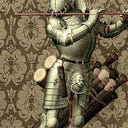Dawning of Satta-yuga: the house of Nanak I
The greatest poets, writers and philosophers are spiritually marked, by nature, by their societies, by the very substance of their existence as carriers of the voice of their people, nations and some times their political communities. It is an irony of history that these great souls appear (or are sent?) only in moments of great crisis, or churn — but then, it is from great churns, of the oceans of existence, of society, cultures, civilisations that progress, or Progress, emerges. Even Georg Hegel recognised the value of destruction, the end of ages — the owl of Minerva (the vehicle of the devi of wisdom in pre-Christian European civilisation) flies at dusk. When epochs end, sunsets are beginnings.
In the history of Punjab, we have stood at such an axial moment in the history of human civilisation (Punjab, in this essay, refers to the dhur-des of maha-Punjab, the Saptnad). A new epoch emerged when Punjab was churned, inside out, by monumental change — chaos, destruction, remaking. Not samundra-manthan, dhart-manthan.
Punjab had made the difficult transition from a medieval to a modern age — long centuries which began with the first invasions of the Sakas were ending with Babur’s: the long sunset, and deep darkness. A long moonless night (kood-amavas) of the Dark Ages (kaliyuga) had almost destroyed Indian civilisation: the last bulwark of the ancient world. The same crucible of the Fertile Crescent which had nurtured human civilisation, had now birthed wave after wave of wrath, the agonies of Abraham’s children were deep.
But, Babur was only an instrument: an instrument to bring to an end the darkest night of human civilisation. At dawn, came Baba Nanak. 3 AM is the hour of the Devil in the West, in India it is the beginning of the Ambrosial Hour: the amrit-vela. Darkness and Light, as the Ancient Ahura Mazda said, are two actors in the play of existence, the stage of reality, which exists behind the curtain of maya — the eternal leela. Yin and Yang; Babur and Baba Nanak. Why does evil exist in the world? Who knows? Who can tell? Perhaps: so that there can be an enemy for the Good to Vanquish.
Georg Hegel recognised the March of History in individuals who Embody the Age; like Napoleon in his. But he wasn’t blessed enough to recognise that the word of God is first embodied in the weakest, the poorest, the wretched (nimaana, nitaana, neeota) — as Leo Tolstoy realised. History moves according to a law (hukam) which cannot be expressed in human terms (not in words, not by mathematicians: not by the likhanhaar, nor by ganit vichar). Babur brought the technology of destruction and the geopolitics of control into India: his descendants created a proto-federal state in partnership with subsidiary allies like the Rajput kings of Rajputana and the Sivalik hills which would be the model for a later, more deadly form of colonialism.
But, while Kings who believed they had the power to create History (jis hath jor kar vekhe ohi…), during this time, Baba Nanak worked with the weakest, to create Society from below (… uttam neech na kohi). Society could seek strength from within, build itself, when the world was ruled by false kings. Communities were rebuilt, commerce began, the Sangat found faith. Baba Nanak was not just a vessel for the voice of Akal Purakh but also the pain of kaal-purakhs — their existential pain and suffering — and so, he also became a bridge between the two.
When the Emperorship of the Mughal Badshah passed on to Akbar, Babur’s grandson, a peace descended on India. This was the moment before bloody dawn. While Akbar bowed his head to the wisdom of this ancient land of many rivers, his son made them red with the blood of its noblest sons. Jahangir Badshah had Guru Arjan martyred — in doing so he bloodied the legacy of his dynasty. While Akbar had done all he could to change the story of his Dynasty’s Rulership over Hind, from that of bloody conquest to Noble Rule, Jahangir had ensured that it would be remembered for one act of evil: his killing of Guru Arjan. (History is still being written, even in our age, and the more time goes on, the more we will remember. And force remembrance upon the sons of time, to know, what was done.) Yin and Yang.
The Mughal killed one Guru, and his descendant, after one generation, was forced to kill another, when Guru Tegh Bahadur offered to be martyred to save the pandits of Kashmir during the reign of Aurangzeb, the parricidal/fratricidal false king. It was also the time for the Tenth Generation of Nanak’s House to rise. For ten generations, in silent humility, the scripture of the Sangat had re-emerged from across all he river lands of ancient Bharat; for ten generations new houses of prayer, of community, of silent strength, had been built; some had trained in spiritual strength, some in the wielding of shastras; in the tenth generation, the Yin and the Yang merged, even the Light and Darkness of Ahura Mazda bore witness as new warriors of the new age (satta-yugga) emerged who embodied death (chandi) while striking a way through the residues of the past — Guru Gobind created the Khalsa, and the age of Ambrosial Light ending the Long Night of Kaliyuga, dawned.
___
TBC.
